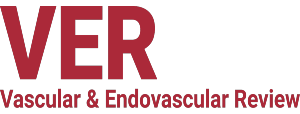VOLUME 6, 2023
The Role of Targeted Infra-popliteal Endovascular Angioplasty to Treat Diabetic Foot Ulcers Using the Angiosome Model: A Systematic Review
VOLUME 6, 2023
Integrating Artificial Intelligence into Vascular and Endovascular Interventions: A Technological Frontier For Enhanced Patient Care
Guizhou Minzu University, Huaxi District, Guiyang, China 550025.
Abstract
At the vanguard of a revolution in healthcare is the use of artificial intelligence (AI) into vascular and endovascular procedures. This study presents a thorough analysis of the possible implications of artificial intelligence (AI) for improved patient care as it investigates the technical frontier where vascular medicine meets AI. For measuring the research study used smart PLS software included smart PLS Algorihtm Model related to the variables. the descriptive statistic, correlation coefficient, describe overall research. Artificial Intelligence provides a comprehensive approach to optimizing the precision, personalization, and preventative elements of vascular procedures, ranging from sophisticated image analysis and personalized treatment planning to real-time decision assistance and post-operative monitoring. The study explores the difficulties and factors involved in this integration, stressing the significance of patient privacy, data security, and continuing education for medical staff. The integration of AI emerges as a potent supplement to human knowledge through multidisciplinary cooperation and prudent deployment, pointing to a future where vascular therapies are not only successful but also incredibly compassionate and customized to each patient's requirements. The overall study founded that direct link between integrating Artificial Intelligence into Vascular and Endovascular Interventions. The main ideas and conclusions covered in the extensive exchange on the relationship between artificial intelligence and vascular medicine are summarized in this study.
Lecture in accounting. University of Basrah, College of Administration and Economics, Department of Accounting.
Lecture in accounting. University of Basrah, College of Administration and Economics, Department of Accounting.
